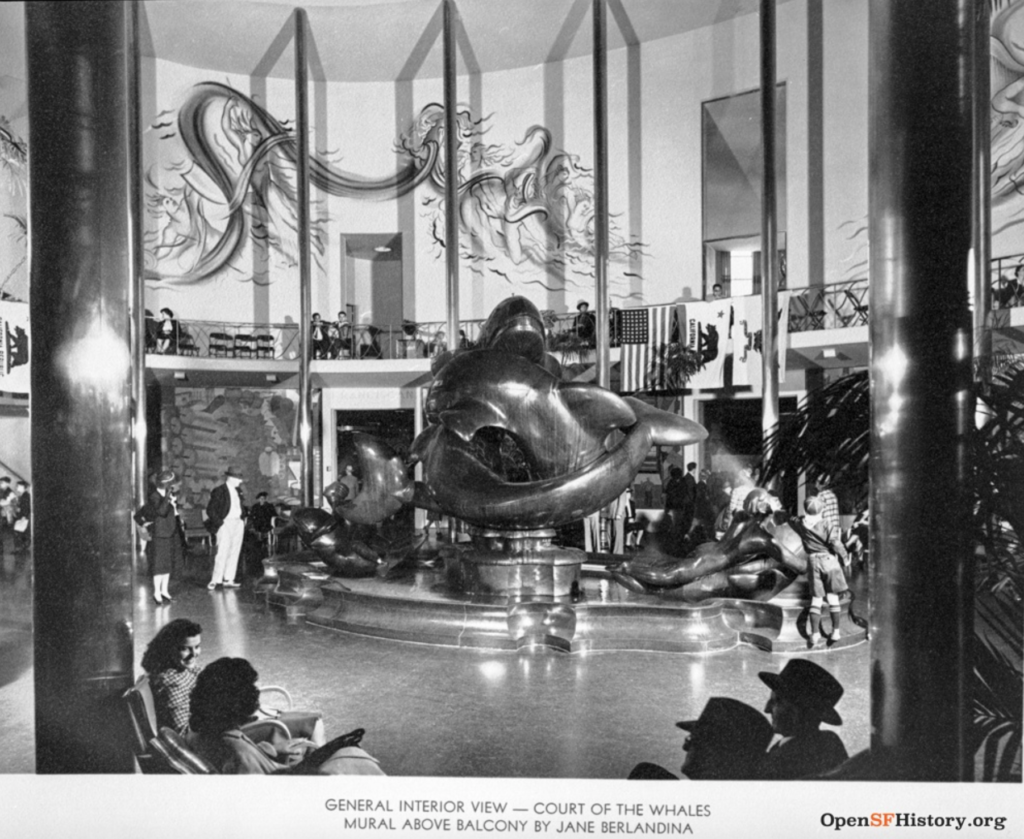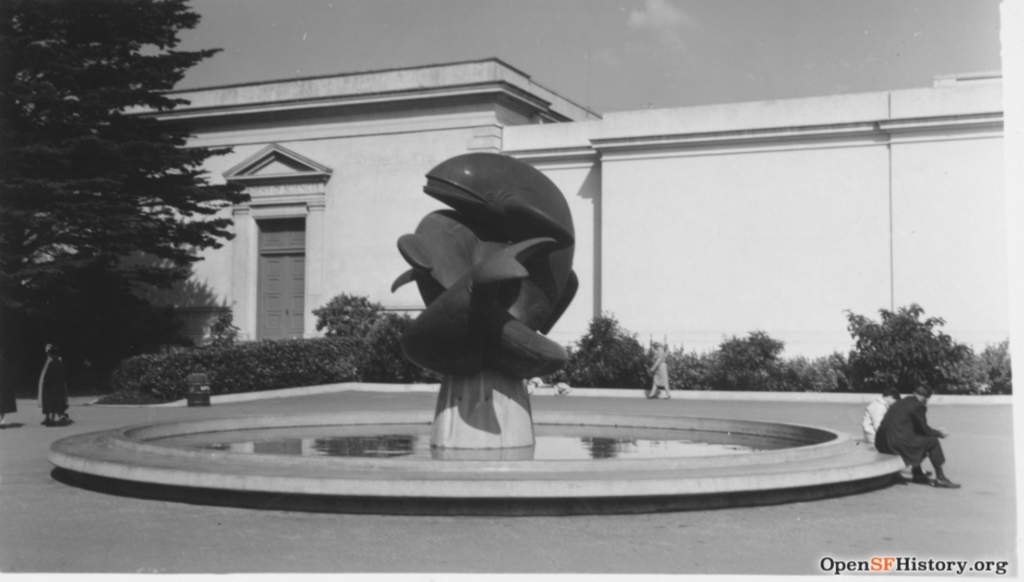Originally created for the Golden Gate International Exhibition
Moved to Steinhart Aquarium
Moved to CCSF
In Storage

Photo from: OpenSFHistory / wnp37.03052.jpg
These whales were in the San Francisco Building at the Golden Gate International Exhibition and were sculpted by Robert Howards.
After the GGIE closed the whales were moved to a prominent place in front of the Steinhart Aquarium in Golden Gate Park

Photo from: OpenSFHistory / wnp27.5859.jpg
Robert Boardman Howard (1896–1983), was a prominent American artist active in Northern California in the first half of the twentieth century. He was celebrated for his graphic art, watercolors, oils, and murals as well as his Art Deco bas-reliefs and his “Modernist” sculptures and mobiles.
Howard was born in New York City on September 20, 1896, to architect John Galen Howard and society belle Mary Bradbury. When he was six years old, the family moved to Northern California. They settled in Berkeley where John G Howard was hired to supervise the erection of the Hearst Memorial Mining Building at the University of California. Robert completed grammar school, but dropped out of Berkeley High School and was tutored privately.
Between 1913 and 1916 he studied at Berkeley’s California School of Arts and Crafts (today’s California College of the Arts). He became acquainted with Alexander Calder in 1915. After graduation, he traveled across the country on a motorcycle to New York City to continue his training at the Art Students League under Kenneth Hayes Miller and F. Luis Mora. He returned to California in 1918, joined the U.S. Army Signal Corps, and was sent to France. At the end of World War I, he studied in Koblenz and in Paris at the Academie Colarossi and the Academie de la Grand Chaumiere.
Notable work by Howard includes: a bas-relief of a phoenix at Coit Tower, the reliefs at the Paramount Theatre (1931–32; specifically the reliefs on the auditorium walls, stage and ceiling), the 1935 cast-iron bas-relief for the Badger Pass Ski House in Yosemite National Park, four massive murals and assorted sculptures for other G.G.I.E. pavilions, including the Brazil Building, California Building, Western State Building, and Ghirardelli Building, two bas-reliefs in cast stone titled Power and Light, at the Pacific Gas and Electric Mission Substation in San Francisco, the City Club of San Francisco’s grand staircase balusters, the linen-based mural in the Mural Room at the Ahwahnee Hotel in Yosemite National Park, the massive bas-reliefs of dancing and musical figures on the exterior of the Berkeley High School Community Theatre, and the 1958 sculpture Hydro-Gyro at the San Jose IBM Research Center.
This sculpture is owned by the San Francisco Arts Commission but is stored on the CCSF campus waiting for restoration and installation. The CCSF administration, the CCSF Works of Art Committee, and other faculty and staff are working with the Arts Commission to arrange funding.